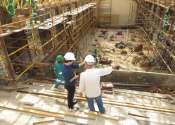Crocs' climate clock: Ancient distribution of Crocs could reveal more about past climates
Underneath their tough exteriors, some crocodilians have a sensitive side that scientists could use to shine light on our ancient climate, according to new findings published in the Journal of Vertebrate Paleontology.








